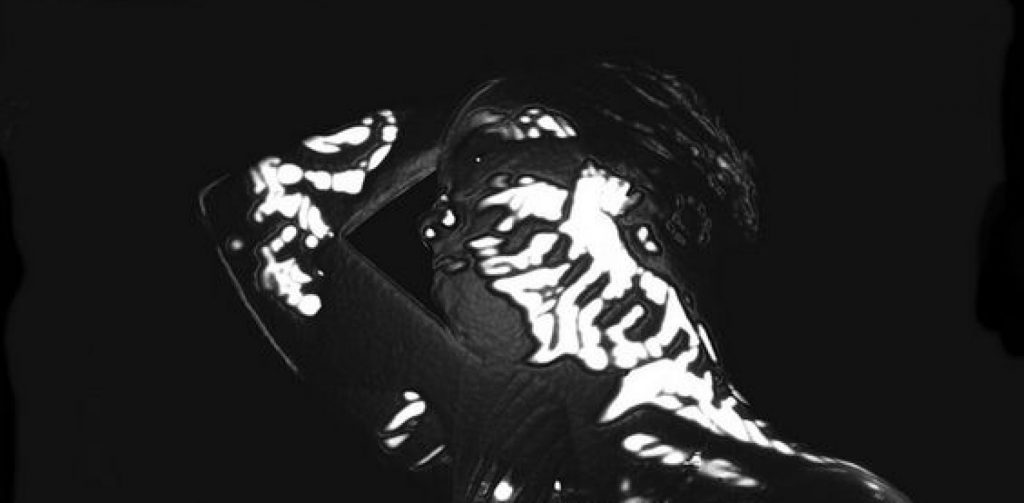The second exhibition I visited was Mumbai artist Shilpa Gupta’s installation “For In Your Tongue, I Cannot Fit”, which I went to with the class at the Barbican. This was a very different kind of experience compared to Nalini Malani’s installation, as it was a lot more dominated by sound and had a more specific concept, as well as a different overall mood. I found the concept very moving – Gupta did an excellent job in my opinion of addressing a centuries-old social issue but emphasising it’s relevance in the current day. I’ve never seen an exhibition quite like this. The overall theme was “[giving] the microphone back to those who were rendered voiceless” (Contemporary, 2021). Gupta creates an experience in which you are able to hear centuries worth of poetry in just an hour, by playing hour-long audio loops through 100 suspended speakers. All of the poems are by people that had either been incarcerated, tortured or executed for their beliefs or for speaking the truth. As this Dallas Contemporary text reads, “As the artist put it herself, ‘Often, as it is happening right now, the voices of the truth cause discomfort and are cut off, yet the echo remains and continues to be heard.’ ” (Contemporary, 2021)
The exhibition consisted firstly of two suspended bars that would spin and show new letters every few seconds, forming words and phrases. In my interpretation these words were spread out over time to highlight the length of time it can take for people’s voices to truly be heard and their words understood. It also set the tone for the rest of the show, which was laid out in The Barbican’s space ‘The Curve’.
VIDEO – https://drive.google.com/file/d/1tFA3OGZUlKX4Q4vIJ65Z-UkiuKYMQ5G7/view?usp=sharing
Following this there were numerous small drawings framed within wood that resembles a prison cell. This added so much context to the main installation because it simplified and perfectly illustrated how these people were all made voiceless and absent by politics and states. All of the drawings looked to me like singular line drawings, with all of the figures faceless, which further evoked the lengths that people in power went to to erase these people who were speaking from the heart. I found this particularly powerful.


Finally I arrived at the main installation. The ambience in the room caught my attention straight away; there was a stillness that induced a sense of calm and panic simultaneously in my body. I’m not sure why this was, maybe because I entered with these images in my mind already, or maybe because the sounds themselves were so haunting. From a compositional and artistic perspective, I really took a lot from the use of the space. The dangling speakers each towered above single pages of poetry stabbed with a spike, which culminated in a minimal but densely populated room. The loop of audio darted between each speaker so that as you walked through the room you would hear a recital in Arabic, for instance, in the distance and then hear a whisper in Spanish right next to you. There was an an ethereal atmosphere that this created, as if the sound was forming a pool around me. It felt like I was in a shallow lake, or walking through a gentle stream. Although most of the audio I could not understand, I still felt it and that told me a lot about how captivating a sense of space can be.

VIDEO – https://drive.google.com/file/d/1NHSRoj5vbRu3r-JQ7TNhIXsxEHx51-Zt/view?usp=sharing
This is definitely one of the most profound experiences I have had in a Gallery. Not only did I have a real emotional response, but I was paying attention to the artistic decisions and use of space that were apparent. After reading the Adam Basanta article that I documented, this felt like a hybrid installation of both open and closed spaces. Open because there was no singular direction in the room you had to go in, but closed as each speaker drew me in for a more intimate moment.
On Shilpa Gupta’s website I found an interview from 2010 that I feel has a huge amount of relevance to this project, and my ideas of how to approach my installation at this point. When asked by Amar Kanwar about defining moments in her career, Gupta finishes her answer with this amazing quote: “This possibility of a shift in perception via an art process is something that has always made me believe that art can indeed create residue in the memory; that it can question and even slightly challenge preconceived notions. Interactivity, especially at a one-to-one level, is a great means of moving towards this.” (Shilpagupta.com, 2022)
This quote truly resonated with me because it echoes what Vicki Bennett was saying in her lecture about the existence of art as a process as opposed to a final product. Gupta talks about interactivity as a means of questioning and challenging preconceived notions, and this I feel sums up my current mindset towards art. Embracing the process as the art instead of glorifying a flashy end point in my opinion transcends the true essence of art into the real world, and an installation is a way to allow other people to get involved with this process, allowing for an artwork that is co-produced and exists moment to moment through experience rather than a definitive end product.
REFERENCES
Contemporary, D. (2021). Art 19. [online] Art 19. Available at: https://www.art-19.com/news/dallas-contemporary-shilpa-gupta-for-in-your-tongue-i-cannot-fit [Accessed 14 Jan. 2022].
Shilpagupta.com. (2022). shilpa gupta. [online] Available at: https://shilpagupta.com/biblio/2010/khoj_book.htm [Accessed 14 Jan. 2022].
